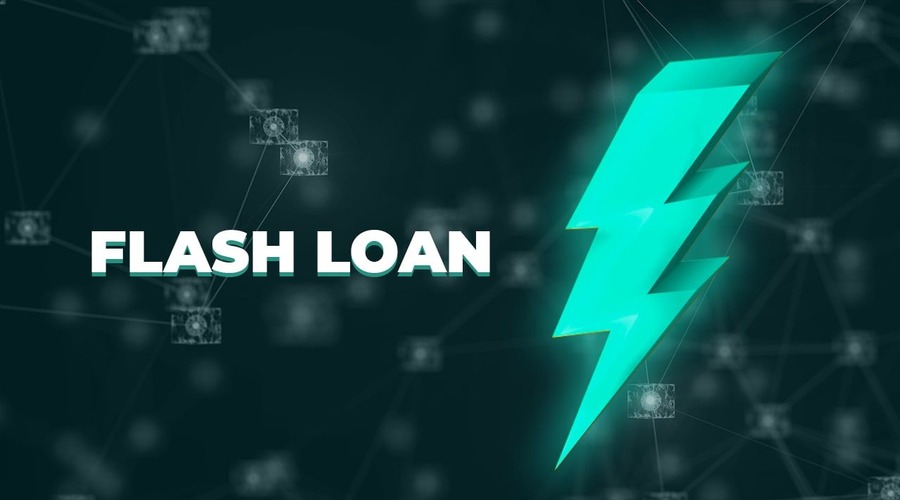
Protecting Against Flash Loan Attacks in DeFi
In recent years, decentralized finance (DeFi) has gained significant traction in the world of cryptocurrency and blockchain technology. DeFi offers users the ability to access financial services without the need for intermediaries, providing greater control and flexibility over their assets. However, as the popularity of DeFi continues to grow, so does the risk of security vulnerabilities. Flash loan attacks have emerged as a major threat, highlighting the importance of robust security measures to protect users’ funds. This article will explore the concept of flash loans, the risks associated with flash loan attacks, and effective strategies for safeguarding against such attacks in the realm of DeFi.
Introduction to DeFi
Decentralized finance (DeFi) has revolutionized the traditional financial landscape by enabling peer-to-peer transactions, eliminating intermediaries, and granting individuals greater control over their assets. Within the DeFi ecosystem, flash loans have become both a useful tool for liquidity provision and an avenue for malicious actors to exploit vulnerabilities in smart contracts.
Understanding Flash Loan in DeFi
Definition of Flash Loan
Flash loans are a unique feature of DeFi platforms that allow users to borrow large amounts of cryptocurrency without collateral. Unlike traditional loans, flash loans do not require borrowers to provide any assets as security. This means that borrowers must repay the loan within the same transaction, or else the entire transaction is reversed.
How Flash Loan Works
Flash loans leverage the composability of DeFi protocols, enabling users to execute multiple transactions within a single Ethereum block. Borrowers can access funds from liquidity pools to engage in various activities, such as arbitrage, collateral swapping, or refinancing loans, all within the constraints of a single transaction.
Benefits of Flash Loan
Flash loans offer several advantages in DeFi. They promote liquidity and efficiency by allowing users to access large amounts of capital without the need for significant upfront investments. Additionally, flash loans facilitate complex trading strategies and financial operations that would otherwise be impractical or impossible.
The Risks Associated with Flash Loan Attacks
While flash loans present opportunities for innovation and financial efficiency, they also introduce vulnerabilities that can be exploited by attackers. Flash loan attacks occur when malicious actors exploit the unique features of flash loans to manipulate DeFi protocols, resulting in financial losses for users and platforms alike.
Examples of Flash Loan Attacks
One notable example of a flash loan attack is the “Reentrancy attack” on the decentralized autonomous organization (DAO) known as “The DAO” in 2016. The attacker exploited a vulnerability in the smart contract code to repeatedly withdraw funds from the DAO before the contract updated its balance. This resulted in a loss of approximately $50 million worth of cryptocurrency.
Vulnerabilities in DeFi Protocols
Flash loan attacks typically exploit vulnerabilities in smart contracts, which are the building blocks of DeFi protocols. These vulnerabilities can include improper input validation, insecure coding practices, or insufficient checks and balances. Attackers can manipulate these weaknesses to execute transactions that are not intended by the protocol designers, leading to financial losses.
Security Measures to Protect Against Flash Loan Attacks

Protecting against flash loan attacks requires a multi-faceted approach that combines thorough security measures, best practices, and user awareness. Here are some key strategies for mitigating the risks associated with flash loan attacks:
- Code Audits and Security Reviews: Conducting comprehensive code audits and security reviews is crucial for identifying vulnerabilities in DeFi protocols. Independent third-party auditors can thoroughly assess the smart contract code, helping to identify and address potential weaknesses before they can be exploited.
- Implementing Checks and Balances: DeFi platforms should implement robust checks and balances to ensure the integrity of transactions and prevent unauthorized actions. These checks can include validating user inputs, implementing proper access controls, and employing secure coding practices.
- Multi-Signature Wallets and Time Delays: Using multi-signature wallets and time delays for critical transactions can add an additional layer of security. Multi-signature wallets require multiple authorized parties to sign off on transactions, reducing the risk of unauthorized fund transfers. Time delays introduce a waiting period before executing sensitive operations, providing an opportunity to identify and halt potentially malicious activities.
- Insurance and Compensation Funds: DeFi platforms can consider implementing insurance mechanisms and compensation funds to mitigate the impact of flash loan attacks. Insurance coverage can help protect users’ funds in the event of a security breach, while compensation funds can provide reimbursement for losses incurred due to malicious activities.
Best Practices for DeFi Users to Protect Against Flash Loan Attacks
In addition to the security measures implemented by DeFi platforms, users should also follow best practices to protect their funds from flash loan attacks:
- Researching and Choosing Secure Platforms: Before participating in any DeFi platform, users should conduct thorough research to ensure the platform has a strong security track record. Reviewing audits, community feedback, and the team’s credentials can help users identify trustworthy platforms that prioritize security.
- Diversifying Investments: Spreading investments across multiple DeFi platforms can reduce the impact of potential losses from flash loan attacks. By diversifying their holdings, users minimize the risk of a single attack affecting their entire portfolio.
- Keeping Software and Wallets Updated: Users should regularly update their software wallets and applications to ensure they have the latest security patches and bug fixes. Keeping up with updates helps protect against known vulnerabilities that can be exploited by attackers.
- Monitoring and Reacting to Unusual Activity: Vigilance is key in the realm of DeFi. Users should actively monitor their accounts for any unusual activity, such as unexpected transactions or abnormal changes in balances. If suspicious behavior is detected, users should take immediate action, such as freezing their accounts or contacting the platform’s support team.
The Importance of Education and Community Awareness
Education and community awareness play a vital role in protecting against flash loan attacks in DeFi. Platforms and industry participants should prioritize educating users about the risks and best practices associated with flash loans. This can be done through informative articles, tutorials, and community forums where users can learn from experienced members.
By fostering a strong sense of community and knowledge-sharing, participants can collectively identify and address potential vulnerabilities in DeFi protocols. Collaboration among developers, auditors, and users can lead to the discovery and mitigation of security risks before they can be exploited.
The Role of Regulatory Compliance
As the DeFi industry continues to mature, regulatory compliance is becoming increasingly important. Regulatory bodies are taking an interest in DeFi to protect investors and ensure the stability of the financial system. Platforms and projects should stay informed about relevant regulations and work towards compliance to establish trust and legitimacy within the industry.
Complying with regulations helps in implementing security measures and safeguards against flash loan attacks. Platforms that demonstrate compliance with industry standards and regulatory requirements are more likely to attract users and investors who prioritize security and risk mitigation.
Continual Improvement and Adaptation
The landscape of DeFi and flash loan attacks are constantly evolving. As attackers discover new vulnerabilities and exploit novel techniques, it is essential for DeFi platforms and security experts to improve their security measures and adapt to emerging threats continually.
Regular security audits, bug bounty programs, and proactive vulnerability testing can help identify potential weaknesses in DeFi protocols. Platforms should prioritize staying up-to-date with the latest security practices and technologies to defend against flash loan attacks effectively.
The Future of DeFi Security
As the DeFi space evolves, so too does the focus on security. Advancements in security technology, such as formal verification and improved auditing tools, are being developed to enhance the robustness of DeFi protocols. Additionally, collaborative efforts within the DeFi community, including bug bounty programs and peer reviews, contribute to identifying and addressing potential vulnerabilities.
Conclusion
Flash loan attacks pose a significant risk to the growing DeFi ecosystem. To protect against such attacks, both DeFi platforms
and users must prioritize security measures. Thorough code audits, implementing checks and balances, using multi-signature wallets, and having insurance and compensation funds are essential for platform security. Meanwhile, users should research and choose secure platforms, diversify investments, keep software and wallets updated, and monitor for unusual activity. The future of DeFi security lies in advancements in security technology and collaborative efforts within the community.
FAQs
Q: What is the primary motivation behind flash loan attacks?
A: Flash loan attacks are primarily motivated by financial gain. Attackers exploit vulnerabilities in DeFi protocols to manipulate transactions and siphon off funds for their own benefit.
Q: Are flash loans only targeted at individuals, or can protocols be affected too?
A: Flash loans can affect both individuals and protocols. While individuals may be targeted to exploit their personal funds, protocols themselves can also be manipulated through flash loan attacks, resulting in substantial losses.
Q: Can decentralized exchanges prevent flash loan attacks?
A: Decentralized exchanges (DEXs) can implement security measures to mitigate flash loan attacks, such as conducting code audits, implementing time delays, and utilizing multi-signature wallets. However, it’s crucial for users to research and choose secure DEXs to minimize the risk.
Q: How can users identify if a DeFi platform is secure?
A: Users can identify secure DeFi platforms by conducting thorough research. This includes reviewing security audits, checking community feedback, and assessing the team’s expertise and reputation in the industry.
Q: Is it possible to recover funds lost in a flash loan attack?
A: Recovering funds lost in a flash loan attack can be challenging. However, some platforms offer insurance mechanisms or compensation funds that may provide partial or full reimbursement for losses incurred due to security breaches.


